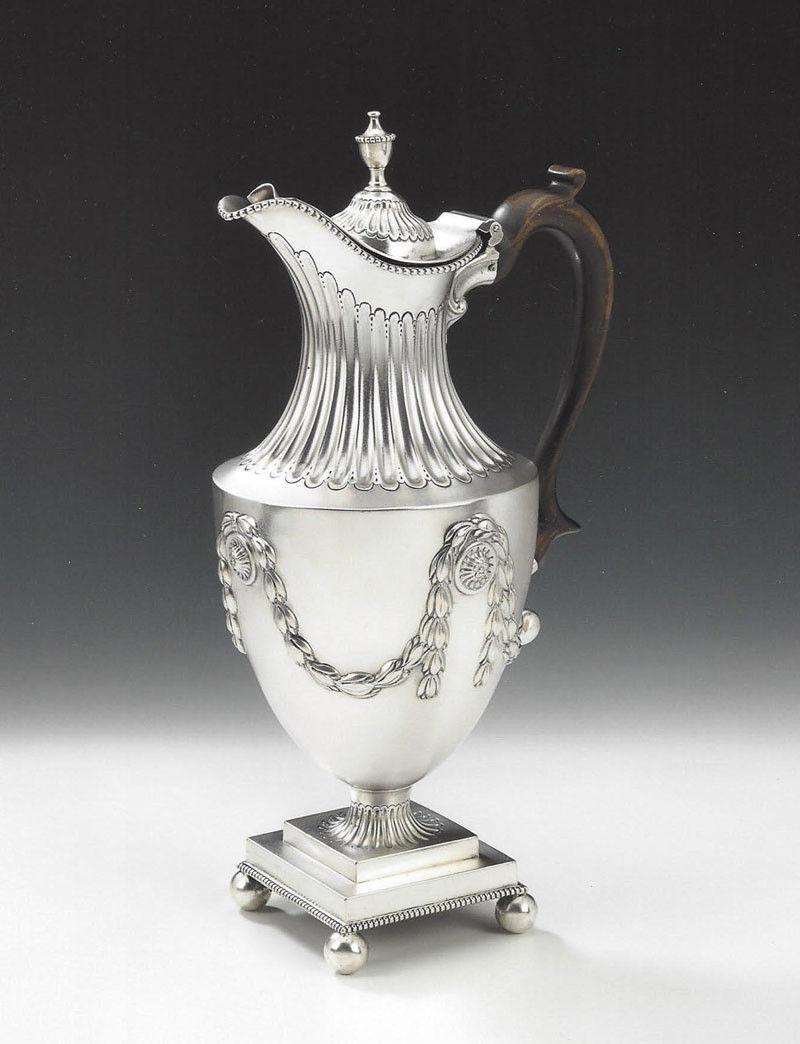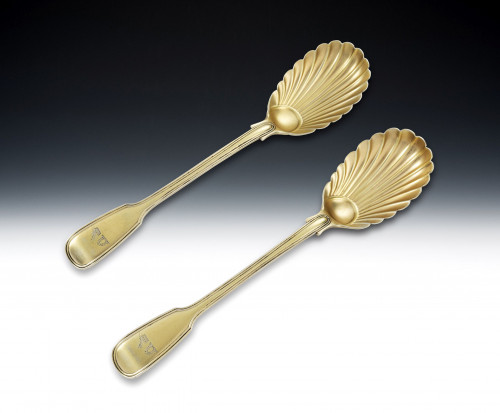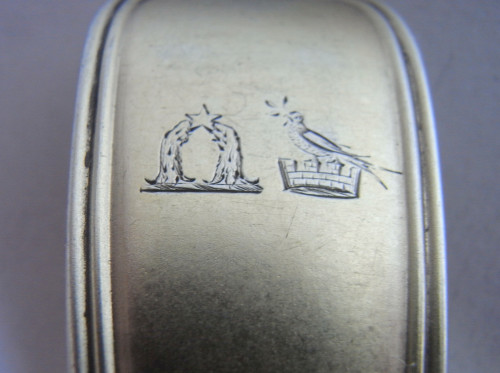A very rare & unusual George III Ewer made in London in 1774 by John Robins. The design originally attributed to the Royal Architect, Sir William Chambers
A very rare & unusual George III Ewer made in London in 1774 by John Robins. The design originally attributed to the Royal Architect, Sir William Chambers
136862
The Ewer stands on an unusual square stepped pedestal foot, with four ball supports, which is decorated with a beaded band and flat fluted section where it meets the main body, most probably designed to simulate a flower head. The vase shaped main body is decorated with raised bold blue bell garlands interspersed with paterae. The elegant neck rises to a beaded rim and is unusually decorated with a wide band of flat fluting and prick dot engraving. The high domed cover is also decorated with flat fluting and terminates in a Neo-Classical beaded urn finial. This piece has its original fruit wood handle, which is attached to the main body with unusual shell mouldings. The Ewer is fully marked in the foot and with the sterling mark on the cover and is in excellent condition. John Robins first mark was entered in 1774, therefore this represents an early example of his work. He had workshops at 5, St John Street when this piece was made. John Robins made fine pieces of hollow ware, a few of which were in the high Neo-Classical style. His most famous piece is probably the important Jug on Lampstand of 1779 which was last offered for sale in November 1994 at Asprey, in their exhibition Silver from a Golden Age 1640-1840 - A private Collection.
This design, originally attributed to Sir William Chambers, is based on drawings carried out by Chambers pupil, John Yenn ( 1750-1821) which are in the Victoria & Albert Museum. The design was first used by Chambers in the 1760s after the 4th Duke of Marlborough employed the celebrated architect to undertake extensive alterations to Blenheim Palace and Marlborough House in London. The Duke also ordered a silver dinner service from Parker & Wakelin in this very design attributed to Chambers. Stylistic similarities, as well as the use of heavy swags, can be seen in Chambers model for a State Coach for George III, ( also in the V & A ). Similarly, the laurel festoons and paterae relate to Chambers work on the East Gate at Blenheim. Some pieces from the Marlborough Service still survive at Blenheim Palace and other know examples are a Tureen in the Leeds City Art Gallery.
Dimensions:
1774
London
RELATED ITEMS





















